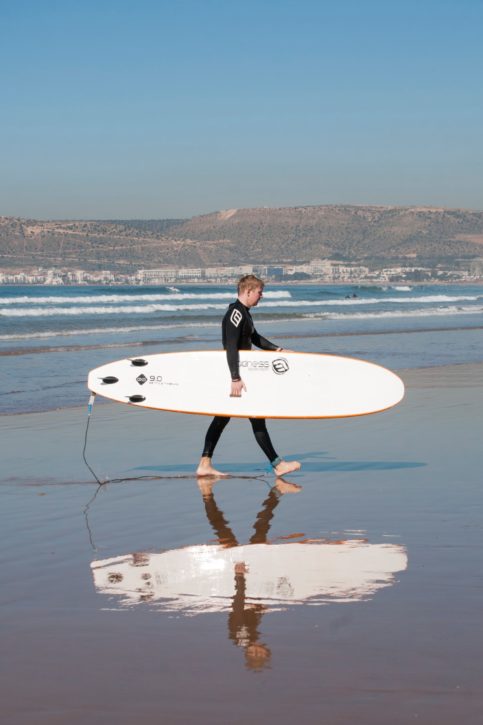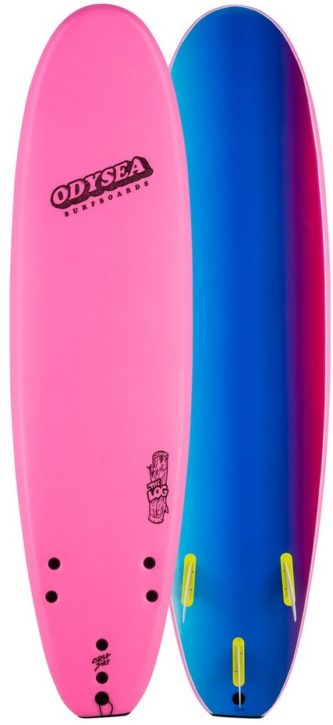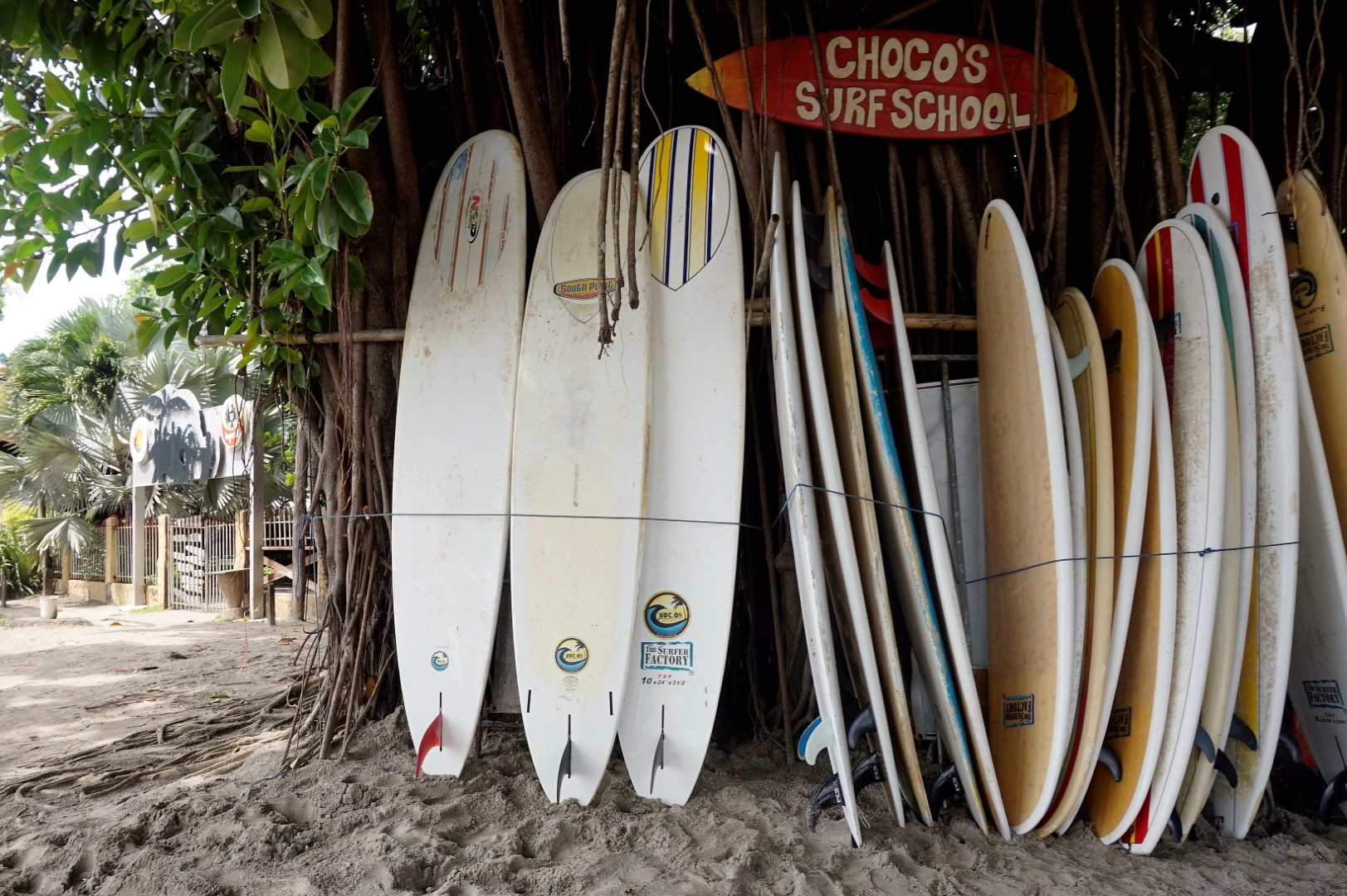Improving your surfing can be broken down into two large categories. Improving your off-wave surfing, and improving your on-wave surfing.
It is easy to think about surfing as just the act of riding a wave, but there is a lot more to it. Improving your experience and skills off-wave is fundamental and should not be overlooked.
What do I mean by off-wave?
All parts of the surfing experience that are not done on a wave, and this is the vast majority of your time spend surfing. Think about all the actions you have to perform to get on a wave, and how a positive or negative experience can impact your on-wave riding.
| Action | Negative Experience | Positive Experience |
|---|---|---|
| Getting to the surf | Heavy fragile board, causes reluctance to go surfing | Lightweight & robust board. Keen to surf regularly, no fear of damaging board. |
| Uncomfortable paddle | Sore ribs, short and infrequent surf session | Abillity to surf regularly for a long time |
| Duck dive / Turtle roll | Difficult to maneuver, hard board is dangerous. Ditch board regularly instead of pushing through wave | Soft board inspires confidence to push through waves, more efficient paddle out |
| Paddle speed | Caught on the inside when paddling out, miss out on waves | Easy to position and get waves |
| Getting on wave | Regular nose-diving & wipeouts | Board catches most waves without an issue |
The reason you need to include your off-wave experience when considering a surfboard is that you cannot get on to waves without this, and if surfing has negative experiences you will be reluctant to surf regularly which is critical to improving in any sport.
Are you surfing the wrong board?
There are conditions to suit every surfboard, so there is really no such thing as an un-surfable surfboard. You are however limited by a couple of things that define the type of surfboards that you should be surfing.
- Your size and weight – The width and buoyancy of a surfboard is going to work best for a surfer of a certain size range. A 6’3 200 lb surfer should probably not be riding the same board as their 5’4 120 lb friend.
- Wave Size – Be honest with yourself about what kind of waves you are going to surf in. Personally, I spend a lot of time in waves from 2-5ft (not much above head height) and on beach breaks. It is not often that I go out in surf that is bigger or smaller than this, or that I surf at high-performance reef breaks.
- Surfing Ability – Do not overestimate your ability when buying a surfboard. If you are unsure about the 6’6 50L board vs that high performance 5’10 30L board that some pro on Instagram is surfing, you should probably be on the bigger board. Why? Because you will catch a lot more waves, and have a lot more fun.

How Can The Right Surfboard Help You Improve?
The best thing you can do to improve your surfing is to get on more waves. This doesn’t just mean going to the beach more often but also stacking the ods in your favor once you are at the beach. You need a board that will get you on more waves, and keep you on the waves longer.
Getting on the right board will have a massive difference to your surfing experience. Surfing more waves and for longer means gaining more experience, and more opportunities for improvement.
Surfboard Volume
The volume of the board is measured in liters. Surfboards with more volume are more buoyant, this makes them easier and faster to paddle, and more stable. Adding more volume is however a trade-off, you do not want to just buy the highest volume surfboard you can find!
| Benefit | Trade-off |
|---|---|
| Easier to paddle | Harder to duck-dive |
| More Stable | Less maneuverability |
Volume is only one part of the equation, as additional volume can be added in length, width or thickness, and spread unevenly across the surfboard to impact how the board performs in the water. This is why we also need to consider the shape.
Surfboard Shape
Surfboards are 3d objects and therefore the potential shapes are infinite. Shapes go through fashions, and within these fashions, there are many unique attributes such different shapes for the nose, tail, variable rocker, channels in the base etc.
Unless you are an advanced surfer, you do not need to worry about a fish tail vs a pin tail, or channels etc as these things are far less important than other shape fundamentals.
A general rule is that the more volume you have forward, the easier and more stable the board will be. A large round nose will be easier to surf than a surboard with an agressive pointy nose, as this will provide additional lift in the front of the board when paddling and getting onto a wave.
The other key are to pay attention to is rocker. More rocker will make a surfboard slower due to increased drag as the low points of the board press deeper into the water, and it will also make the board more agile and turn faster due. Less rocker on the other hand will make the board faster and easier to paddle, but less agile and easier to ‘pearl’ or nosedive on takeoff.
Surfboard Comfort
If getting on more waves leads to faster progression and improvement in your surfing, then surfboard comfort requires your consideration. Anyone who has been out surfing for the first time in a while on a hard fiberglass surfboard will know how painful it can be on your ribcage if you try and paddle out again the following day. Especially when you surf without a wetsuit!
You need to have a board that you can comfortably surf regularly, a board that will not hurt you, and that you are no worried about hurting your board when the only ride to the beach involves putting your precious surfboard in the back of your mates pick up truck.
It will come as no surprise that I strongly recommend a Soft Top Surfboard over a Fiberglass surfboard in this scenario. Soft Top Surfboards can take a lot more abuse that comes with regular trips to the beach, and they won’t leave your body black and blue when you inevitably have a few knocks out in the surf!
The Best Surfboard For Improving
Now you know that in order to fast track your surfing progression you need a board that will deliver on the following:
I know just the board! It is one of my all-time favorites, and is one of those few boards that lives up to its marketing hype of ‘suitable for all levels’. This board will deliver smiles if you are a first-time surfer or dropping into some large overhead barrels, and will happily take a beating but keep performing like it is brand new.
Catch Surf Odysea Log

The Log’ is the classic longboard in the Odysea range from Catch Surf, the brand that leads the industry in representing Soft Top Surfboards for the advanced rider.
This board ticks all the boxes, with a moderate-high volume traditional shape with even distribution and a wide nose. There is moderate rocker, mainly in the front of the board which makes for fast paddling and good nose-dive prevention.
For the advanced rider, this board features triple wood stringers for stiffness to increase performance, and standard fin boxes which allow you to experiment with high performance fins.
There is a huge range of colors and sizes, as along with the 4 color variations of the basic Log, there is a variety of Pro-model Log’s made in partnership with the riders of the Catch Surf team.
| Board Size | Volume | Rider Weight Range |
|---|---|---|
| 6’0 | 57L | < 145lbs / 65 kg |
| 7’0 | 72L | < 170 lbs / 75 kg |
| 8’0 | 86L | < 200 lbs / 90 kg |
| 9’0 | 98L | > 200 lbs / 90 kg |
In case you need any more convincing that the Odysea Log is a suitable platform to improve your surfing, check out the shot below from Pro-Skimboarder and Catch Surf team rider Blair Conklin.
